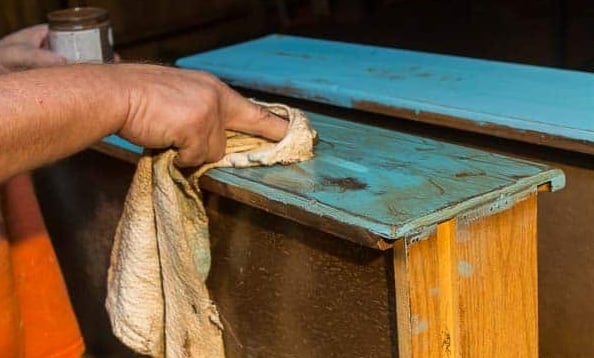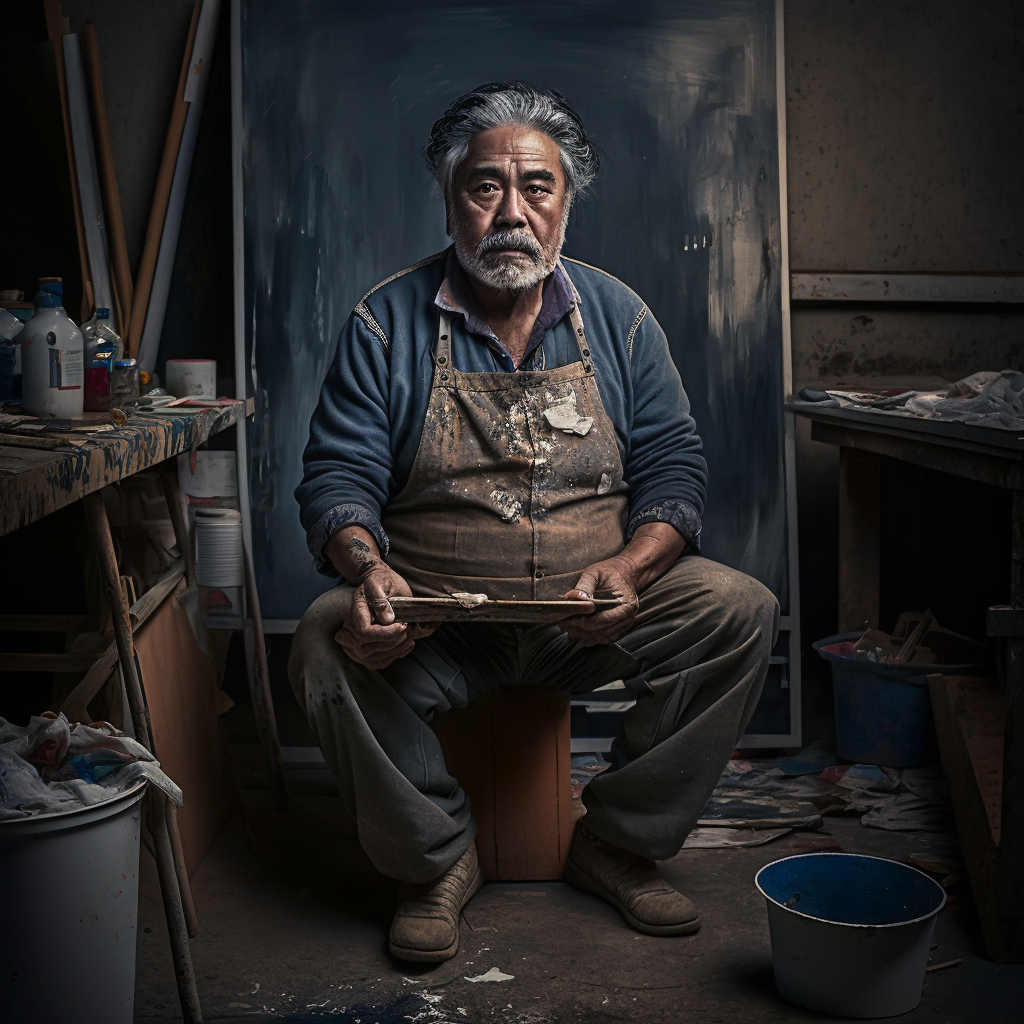Randy Charles is the owner of PaintCentric.com, a website dedicated to providing information, tips, tricks, and news about all things paint. With over 10 years...Read more
House decorations have a lot to tell about every building, especially for visitors. And theres invariably no way house decorations can be complete without using paints.
Paints give every room in the house a different look and say a lot about its functions. Despite their numerous benefits and aesthetics, one question you will always find on the internet each time you search for the phrase chalk paint is why is my chalk paint cracking when it dries.
Chalk paint cracking is a common phenomenon; if youre a homeowner, you should have experienced it at one point.
A crack in chalk paint can be due to several reasons, including bleeding through or applying a second coat before the first coat gets dried. Thats not all. If you apply too many layers of paint on a dirty surface, your chances of escaping a crack are pretty slim.
Why Is My Chalk Paint Crackling when It Dries?
Chalk paint cracks appear on surfaces whenever there are not adequately sandpapered, cleaned, smoothened, and in most cases, when new paints are applied to existing ones.
So, if you often wonder why to chalk paint cracks, it is primarily due to improper handling and application of chalk paints.

Does Chalk Paint Wash off?
Yes, chalk paint does wash off a surface when exposed to running water and rubbed against rough surfaces depending on the moisture and nature of the surface.
This may seem like a yes or no question, which requires a yes or no answer but its so difficult to answer directly as the state and quality of every chalk Paint is a strong determinant as to if it will wash off or not.
For example, if low-quality chalk paint is applied on a non-suitable surface outdoors, it is most likely to be washed away, as one of these can result in its washing off and a combination of these fastens the washing process.
Also Read: How to Get Chalk Paint Out Of Carpet?
How Long Does It Take for Chalk Paint to Dry?
According to Chalk Paint, chalk paints take a minimum of 24 hours to dry up and a maximum of 2 weeks to harden. But you can use the applied surface cautiously after 24 hours in an emergency.
Why Is My Chalk Paint Cracking when It Dries?
Patterned cracking occurs on surfaces due to the application of chalk Paint on a harsh surface, the covered surfaces continual swelling and collapses beyond the elasticity of the paint film.
How Do You Fix Cracked Chalk Paint?
You can fix a cracked wall by applying new chalk paint to the broken surfaces. It is done by totally removing the old chalk Paint and entirely scraping and sanding the surface. In the case of large surfaces, a heat gun is used with caution.

In addition, use a high-grade water primer before an external water-based paint of the highest quality. Finally, Dulux suggests using the Dulux Weather shield X10. With this, why is my chalk paint cracking when it dries? It shouldnt be a difficult question to find answers to anymore.
Also Read: How to Make Chalk Paint Without Plaster of Paris?
What Are the Other Problems of Chalk Paint?
Chalk paint has various problems resulting from its wrong use, improper preparation of surfaces before application, and, most significantly, the environment in which it is applied and left to dry.
Below are problems associated with the wrong Use of chalk Paint:
1. Blistering
Blistering is the presence of bubbles caused by a localized loss of adhesion, bringing about little airspaces on the surface.
Blistering occurs when chalk Paint is applied on a warm surface or directly under sunlight, using oiled-based chalk Paint over a damp surface, and exposing wet chalk paint surfaces to dew, high humidity areas, rain, etc.

Possible cause
- Using the inappropriate roller cover
- Using lower paint grades
Remedy
- You can scrape and sand the surface to remove the blisters.
- Next, a high-quality primer is used to prime any timber, after which a high water-based exterior water paint should be applied.
2. Chalking
The production of fine dust on the face of a coating film during weathering causes the color of the paint to fade. Although this process can be desired to an extent, the excessive film erosion of the paint can lead to a large amount of chalking on the surface.
Causes
- The application of low-grade, heavily colored paint.
- The application of interior paint to exterior surfaces.
Remedy
- Remove the remaining chalk, then rinse with a hosepipe or pressure washer.
- After it has dried, brush your palm over the surface to check for any leftover chalk.
- If some chalk remains, apply a quality primer, then use premium outdoor paint.
- If almost nothing remains, repaint with premium outdoor paint. Dulux Weather Shield X10 is recommended. Stipple/Roller Marks The roller unintentionally created a patterned pattern in the paint.
3. Roller stipples
Low-quality rollers and wrong rolling techniques are the significant causes of roller marks and stipples. This affects the whole look of the applied surface as it looks so minimal and avoidable. It can bring a lot of damage and effect, damaging every work done on a surface.
Remedy
- Use the correct roller cover.
- Prevent the paint and the substrate from taking too long a nap.
- To provide proper film thickness and consistency, use high-quality rollers.
4. Mud Cracking Deep
Mud cracking is when uneven fractures in dry paint coating like dried mud are seen on a surface of a building after chalk Paint is applied. Mud cracks affect the surface, making it look like they havent been worked on. This is the most significant problem one can ever have when applying chalk paint.

Cause
- Mud cracking occurs when too much Paint thickness is applied to a surface.
- Mud crackling occurs when coatings are applied overly thickly to enhance lower-grade paints intrinsic poor concealment (covering).
- Mud crackling also occurs when paint can build up in different areas during application.
Solution
Remove the layer by scraping and sanding to stop mud from cracking completely. Use a high-quality water-based primer, quality water-based paint, and a suitable nap length roller. Before repainting using quality water-based paint, polish the area with sandpaper. Dulux recommends Dulux paints because there are light that there dont hide in corners
5. Lapping
Lapping is the appearance of paint colors in a non-uniform manner or increased gloss. This happens when wet and dry layers accumulate during paint application. This must be avoided as it requires keen attention when working.

Possible Cause
- Lapping occurs due to failure to keep a moist edge during painting.
- Lapping also occurs when low-solid economy paints are used on surfaces.
Solution
When painting, always keep a moist edge by applying paint to all surfaces, newly painted and repainted, so that both parts are even
6. Burnishing
Burnishing happens when a paint films gloss changes due to rubbing or scraping it. Burnishing affects the glow of the surface to a great extent.
Possible Cause
- Burnishing occurs flat paint is used in highly used areas where a higher glow is desired.
- Burnishing occurs due to frequent washing and spot cleaning.
- Burnishing occurs by rubbing items (such as furniture) against the walls.
- The use of lower paint grades results in burnishing
Solution
Heavy paint requiring areas like the doors, windows, sinks, and trims should be appropriately cleaned and painted using high-quality semi-gloss acrylic enamel.
Dulux recommends that this class, paint is lasting and more accessible. In busy areas, choose a low shinning, semi-bright area. Always use mild cleaners to clean painted surfaces; rinse with clean water.
Related Reading: What Is Medium Base Paint?
Conclusion
Paintings are essential to buildings, and in cases where cracks are seen on the wall after a project, it speaks volumes about the competence of contractors and workers. Thus, all the proper methods of applications must be observed to give a perfect finish to every surface to prevent cracks. The answer to why is my chalk paint cracking when it dries? It is an all-inclusive one, readily available in this piece.

Randy Charles is the owner of PaintCentric.com, a website dedicated to providing information, tips, tricks, and news about all things paint. With over 10 years of experience in the painting industry, Randy has become an expert in the field and is passionate about helping others learn more about painting. He has written numerous articles on the subject and is committed to providing accurate and up-to-date information to his readers.
- Latest Posts by Randy Charles
-
How to get paint off a mirror?
- -
How much does it Cost to Paint a Car? – All You Know is Here
- -
How much does Car Paint Cost? – Get To Know Here
- All Posts
